Interfering edges are raised areas, edges, or unevenness on components or in the screw environment that can impair the automated screwdriving process. They can cause the access to the screw location to be blocked to a certain extent. This also includes masks that are used to protect the component. As a result, not every screwdriver can reach the screw location, which requires special technologies.
What you should know about interfering edges at the screwdriving location
What is meant by an interfering edge in a screwdriving process
How to define an interfering edge at a screwdriving location
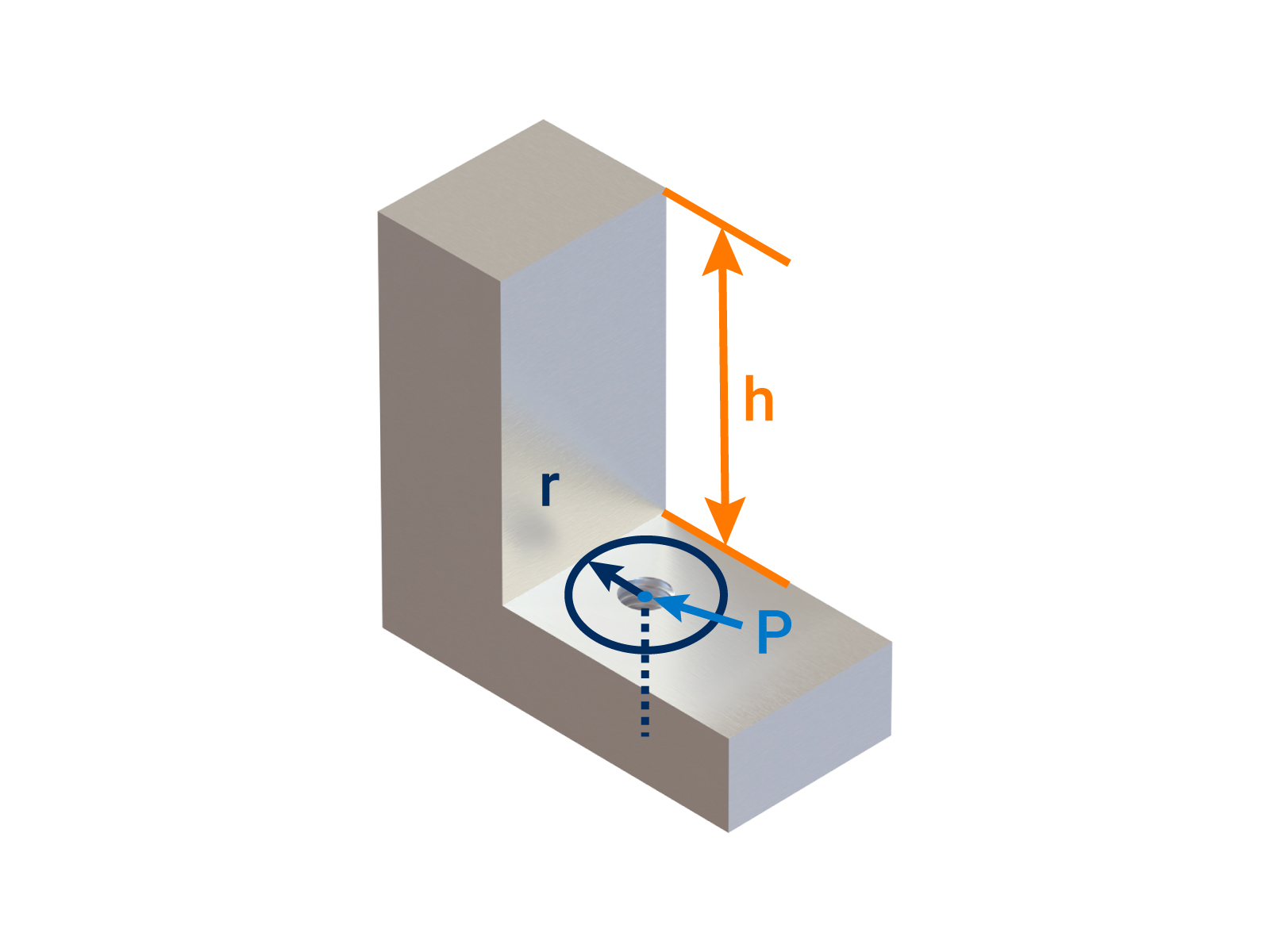
Interfering edges can appear in various forms—perhaps only on one side of the screw location, or possibly all around it. The depth of the screwdriving location affected by the interfering edge may also vary. Nevertheless, WEBER always finds the right solution for your application.
The following parameters are generally relevant for WEBER:
- P = screwdriving location
- r = radius (distance between screwdriving location and interfering edge)
- h = height (height difference between interfering edge and screwdriving location)
There is no interfering edge if, from P,
r > 20 mm und h < 30 mm
are maintained.
*depending on the head diameter of the element
What technical solutions are available for interfering edges
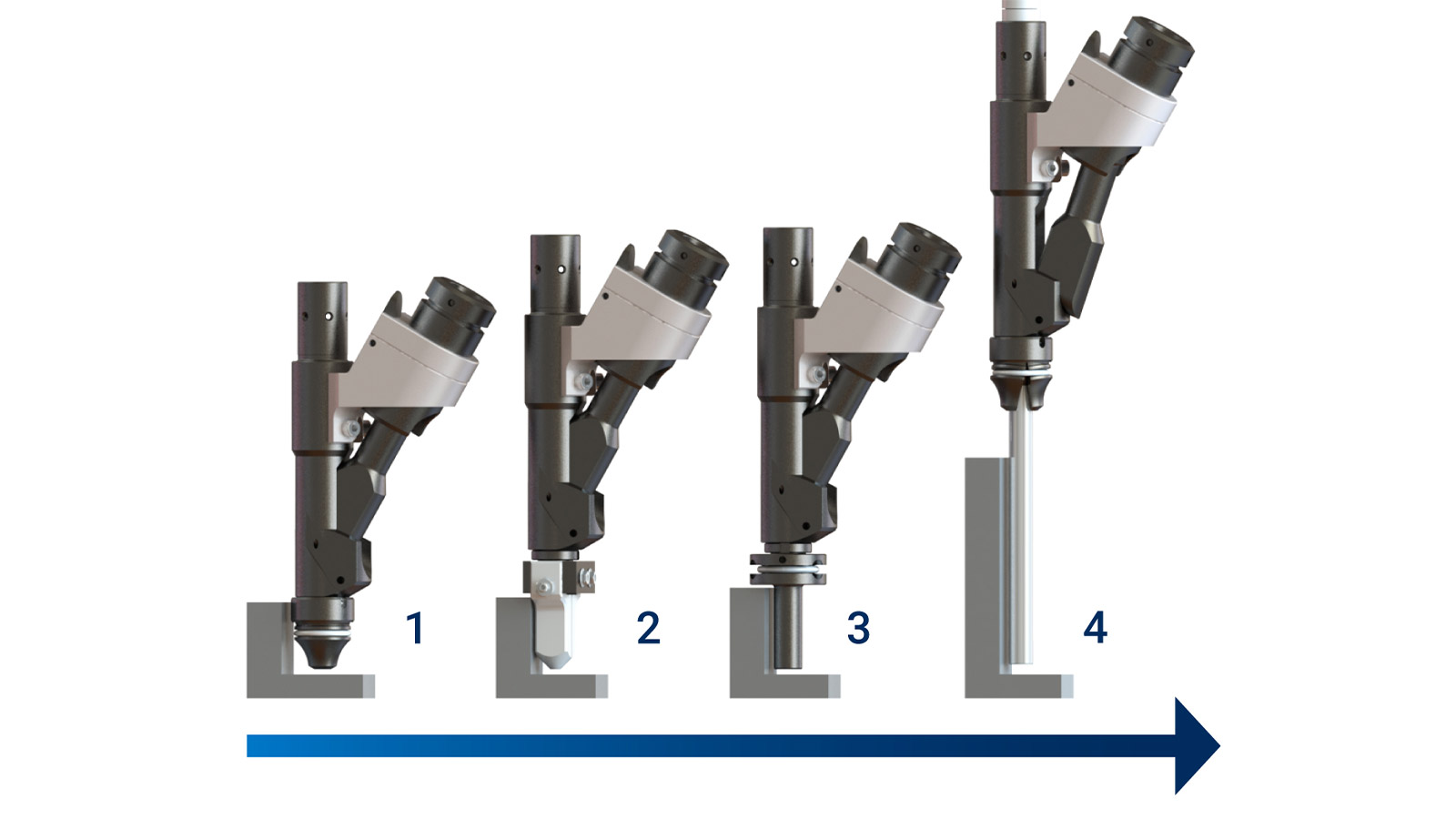
Mouthpiece solution for reduced accessibility to the screwdriving location
WEBER has developed targeted solutions to ensure reliable screw fastening even under difficult conditions. By using these solutions, WEBER optimizes the process reliability and efficiency of screw assembly and enables reliable automation even with demanding workpieces. The height and distance of the interfering edge are decisive when selecting a suitable mouthpiece. The mouthpiece is the foremost part of a screwdriving spindle in which the fastener is held back after the feeding process before the screwing or setting process starts.
- Round pawl set (without vacuum tool)
Application: for easily accessible screw locations without significant interfering contours
Interfering edge tolerance: low - Jaw pawl set (without vacuum tool)
Application: for screw locations with lateral interfering edges or limited clearance
Interfering edge tolerance: medium - Ball sleeve (without vacuum tool)
Application: for tight, angular, or slightly recessed screw locations where pawls cannot open
Interfering edge tolerance: medium - Circular jaw set (with vacuum suction tube)
Used for: hard-to-reach screw locations, especially for overhead screw connections or pick-&-place applications
Interfering edge tolerance: high, can also be used with limited accessibility due to the suction tube
Learn more about the following WEBER solutions
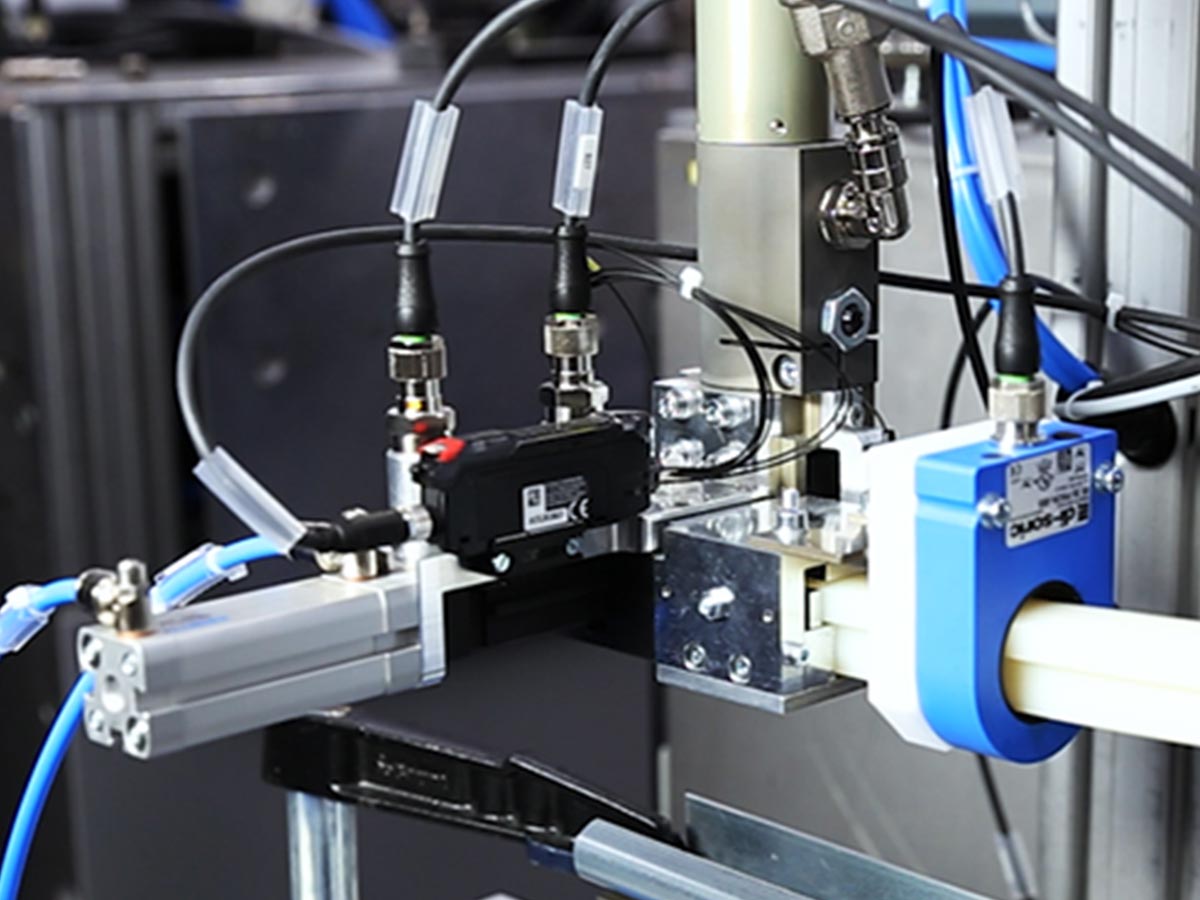
SEM/SEK screwdrivers
These systems are specially designed for screwdriving tasks with axial feeding. Their robust design and precise screw feeding ensure high process stability, even when components feature interfering edges or uneven surfaces.
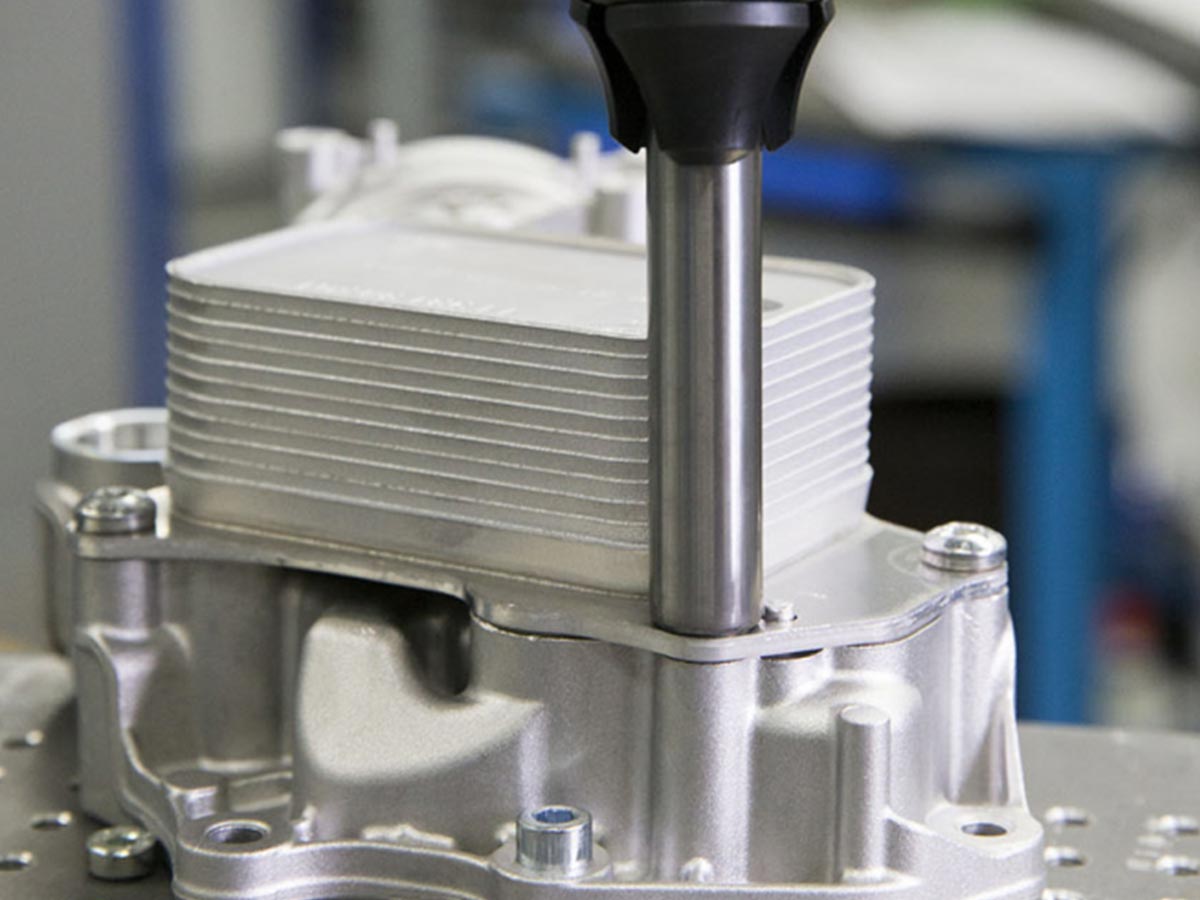
SEV screwdriver
Thanks to its integrated vacuum screwdriving technology, this system enables precise screw feeding—even with difficult-to-access or irregular component geometries. Secure fixation of the screw at the tool head ensures accurate placement even in challenging environments.
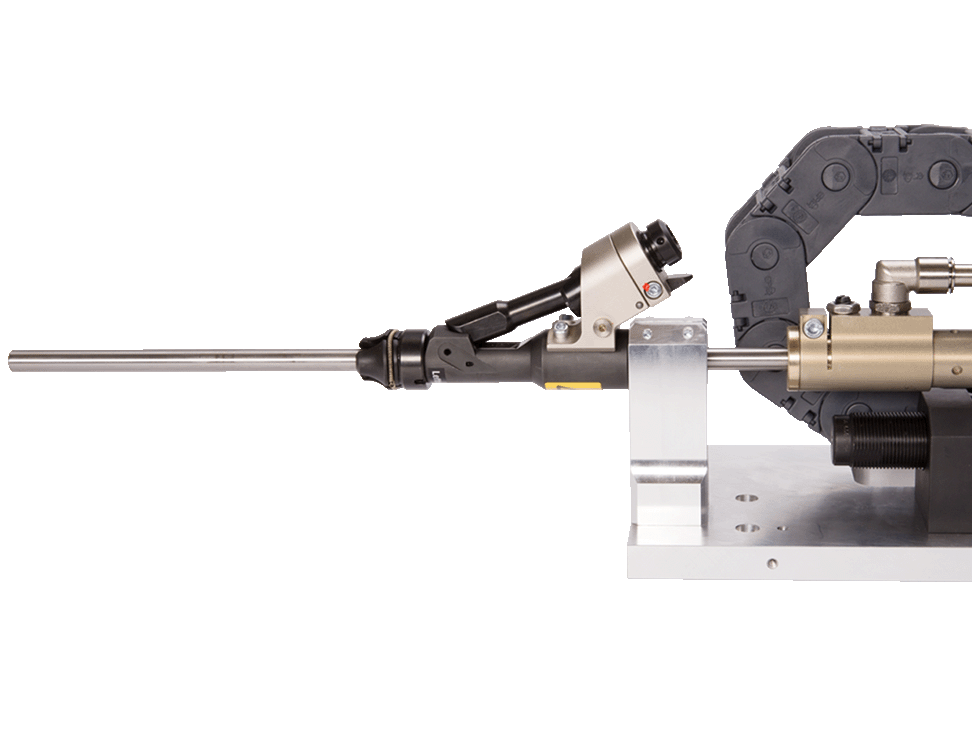
SEV-E screwdriver
This further development of the SEV system was designed specifically for applications with increased accessibility requirements. Its sliding design and optimized screw feeding allow even more flexible integration into automated processes.
Contact our expert.
Nora Erdei has been working as a product manager at WEBER Schraubautomaten GmbH for 2 years. She specializes in the product range of screwdriving spindles and the digitalization of screwdriving curve analysis. After studying Industrial Design Engineering, she designed the spindles she is now responsible for. Thanks to her Master of Science degree in industrial engineering, she also has the necessary know-how to successfully combine technical and economic aspects.
WEBER Schraubautomaten
WEBER Schraubautomaten GmbH is a family-run and innovative company that attaches great importance to the sustainable design of the value chain. The result is high-quality products with maximum process reliability that make production processes more efficient. Your success is our success.

